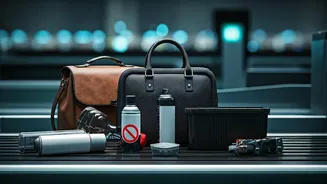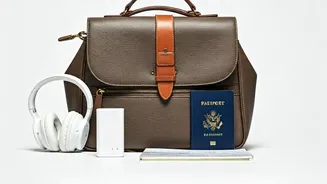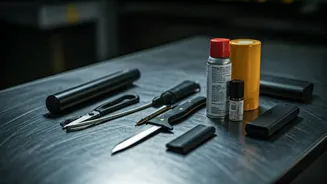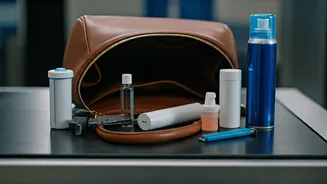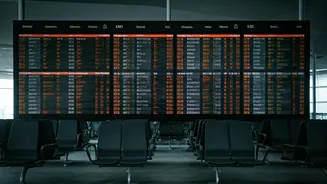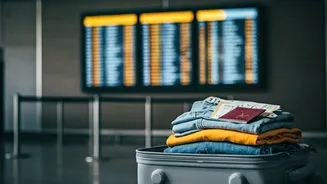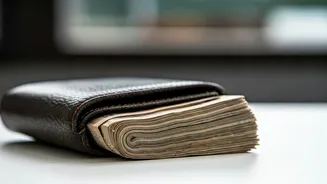Sharp Objects Beware
First up, consider the potentially dangerous items. This includes objects with sharp points or edges that could be used as weapons. Think about things
like nail clippers, scissors with blades longer than 6cm, and metal nail files. These are generally banned from carry-on luggage. Pack these items in your checked baggage to prevent security confiscation. This is especially crucial to remember as some security personnel may enforce stricter regulations. Always check the specific rules of your airline and the airport you're flying from for the most up-to-date information.
Liquid Restrictions Explained
Next, let's look at liquids, aerosols, and gels (LAGs). These are subject to strict limitations. You're allowed to carry them in containers of 100ml or less, all fitting into a transparent, resealable plastic bag of about 20cm x 20cm. Larger bottles or containers, even if partially filled, often get confiscated. This includes cosmetics such as perfumes, lotions, and gels. Ensure everything adheres to these rules to avoid delays at security and to prevent losing your favorite products.
Prohibited Power Banks
Power banks or portable chargers are vital for many, but be cautious. While allowed, there are safety precautions. The power bank's capacity must be clearly stated, and you should typically not carry power banks exceeding 100Wh (watt-hours) in carry-on luggage. Power banks with a capacity between 100Wh and 160Wh may require airline approval. Any power banks that do not have their capacity clearly marked will be strictly prohibited, potentially resulting in removal or being held back. It's smart to pack them where they are easily accessible for inspection.
Flammable Items Prohibited
Flammable items pose obvious risks. The regulations on flammable materials are stringent due to their potential to ignite and create dangerous situations on the plane. Examples include matches, lighters, and certain types of aerosols. Matches and lighters, particularly those with flammable liquid, are generally prohibited. Aerosol products, as mentioned earlier, must comply with liquid restrictions. If you intend to carry any of these, check the rules beforehand to make sure you won't fall short.
Sporting Goods Concerns
Sporting equipment can sometimes be problematic. While not always forbidden, certain sports items may be restricted. For instance, baseball bats, hockey sticks, and other similar equipment can be considered as potential weapons. Many airlines require these items to be checked, especially if they could be used to inflict harm. Think about the safety of others and avoid any potential issues at the airport by considering this rule.
Medications & Medical Needs
While essential medications are generally allowed, there are certain considerations. You may carry necessary medication, including prescribed or over-the-counter drugs, in your carry-on luggage. However, it's wise to have a prescription or a doctor's note, especially for liquid medications, in case you need to justify your needs to airport security. This can help to clarify any potential confusion. Also, keeping the medicine in its original packaging is highly advisable.
Sharp Knives and Tools
Similar to the warning against sharp objects, be mindful of knives and tools. Any knife, even small ones, with a blade longer than a few inches is usually prohibited in carry-on. Tools that could be misused as weapons, like screwdrivers or pliers, should also be checked. Check the specific regulations of your departure airport. It’s always better to be safe than sorry, so consider placing these in your checked luggage to avoid any surprises.
Lithium Battery Precautions
Finally, batteries, especially lithium batteries, require special attention. As mentioned for power banks, these batteries can pose fire hazards if mishandled. Loose lithium batteries are generally forbidden in checked luggage and must be transported in carry-on baggage. Ensure the batteries are protected to prevent short circuits and accidental activation. Considering all these precautions will ensure you are complying with the safety regulations, reducing potential risks and delays.
